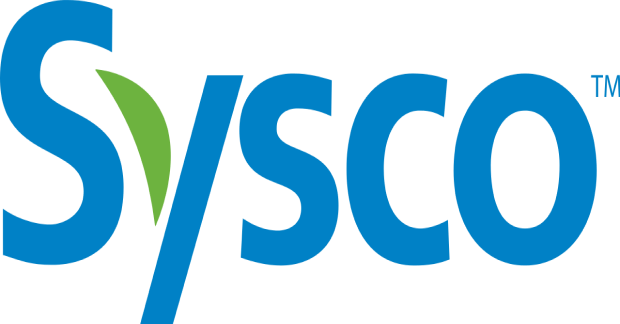Market Size of north america frozen and canned seafood Industry
| Icons | Lable | Value |
|---|---|---|
|
|
Study Period | 2017 - 2029 |
|
|
Market Size (2024) | USD 25.41 Billion |
|
|
Market Size (2029) | USD 27.23 Billion |
|
|
Largest Share by Type | Fish |
|
|
CAGR (2024 - 2029) | 1.39 % |
|
|
Largest Share by Country | United States |
|
|
Market Concentration | Low |
Major Players |
||

|
||
|
*Disclaimer: Major Players sorted in no particular order |
North America Frozen and Canned Seafood Market Analysis
The North America Frozen and Canned Seafood Market size is estimated at 25.41 billion USD in 2024, and is expected to reach 27.23 billion USD by 2029, growing at a CAGR of 1.39% during the forecast period (2024-2029).
25.41 Billion
Market Size in 2024 (USD)
27.23 Billion
Market Size in 2029 (USD)
4.60 %
CAGR (2017-2023)
1.39 %
CAGR (2024-2029)
Largest Segment by Country
72.17 %
value share, United States, 2023
Close to 75% of the consumption is in the US. Frozen seafood is very popular in the age group between 18 and 37 years, primarily ready-to-eat and ready-to-cook products.
Largest Segment by Type
64.71 %
value share, Fish, 2023
The introduction of processed fish products in the ready-to-eat and ready-to-cook category will boost demand, with consumers leaning towards value-added products.
Fastest-growing Segment by Country
1.76 %
Projected CAGR, Canada, 2024-2029
Canada is one of the biggest seafood producers with sustainable practices in the region, with a preference for frozen and canned seafood with low fat and high protein.
Fastest-growing Segment by Type
1.52 %
Projected CAGR, Shrimp, 2024-2029
Frozen shrimp's demand in North America is majorly owing to its non-perishable nature. Hence, more North American importers, distributors, and food service operators prefer to use it.
Leading Market Player
6.47 %
market share, Sysco Corporation, 2022

The company offers a diverse range of seafood products, including lobster, octopus, salmon, tuna, shrimp, cod, and mussels, along with many varieties of calamari.
The rising demand for convenience meals is propelling the market growth
- The frozen and canned fish segment accounted for the major share of the market, with an increase of 4.36% by value in the region in 2022 compared to the previous year. The primary factors influencing the North American market for frozen seafood products are the rising demand for convenience meals, such as ready-to-eat (RTE) and ready-to-cook (RTC) goods, and the increasing health-consciousness among consumers.
- The frozen and canned seafood market grew by 36.40% in value from 2017 to 2022. Due to busy lifestyles, growing urbanization, and high disposable incomes, the demand for easy-to-prepare and easy-to-consume food is also increasing. Moreover, frozen seafood is often processed and frozen at the peak of freshness, preserving its nutritional value and minimizing the risk of bacteria growth.
- The global demand for high-quality, sustainably sourced fish and seafood is growing at a significant rate. Frozen and canned fish consumption accounted for more than 38.81% of the overall seafood consumption in North America in 2022. In the region, the United States is the major seafood-consuming country with a wide coastline of 19,924 km.
- The other seafood segment, including lobsters, crabs, and oysters, is expected to be the fastest-growing segment in Mexico. It is expected to register a CAGR of 5.82% during the forecast period (2023-2029). The growing awareness about the health advantages of seafood is attracting the attention of more consumers toward the category. The sales of frozen and canned lobsters, crabs, and oysters witnessed a hike of 7.57% from 2020 to 2022 in Mexico. The increasing adoption of Western culture is also boosting the consumption of lobsters and crabs.
Rising production in the region is the primary market driver
- The consumption of frozen and canned seafood has experienced a considerable increase in recent years. This is largely attributed to the health benefits of seafood, which have been scientifically demonstrated to protect human health by reducing the risk of serious chronic and inflammatory illnesses. Seafood is becoming increasingly popular due to its environmental benefits. The added advantages of long shelf life and year-round availability across various channels, along with increased consumer health awareness, are boosting frozen seafood sales volume and value. Nearly 73% of US households purchase frozen seafood compared to fresh seafood. The United States is the leader in North America, holding a 72.17% share by value in 2022.
- Canada is anticipated to be the fastest-growing country in terms of the consumption of frozen and canned seafood. It is projected to register a CAGR of 1.77% by value during the forecast period. A vast coastal line and developing aquaculture support consumption in the country. The variety of commercially cultivated species in Canada has grown to approximately 45 kinds of finfish, shellfish, and marine algae. A long trip from the coast to various cities in the country makes frozen fish the most viable option in the Canadian market to get the seafood without damage or losing the nutrients to both manufacturers and consumers.
- Mexico is also a major market in the region. It is one of the largest seafood producers, and it provides more than 40% of domestic seafood using sustainable practices. Almost 39% of the Mexican population has high BMI rates; frozen and canned seafood are appealing to Mexican consumers as they have low fat and high amounts of proteins and nutrients.
North America Frozen and Canned Seafood Industry Segmentation
Fish, Shrimp are covered as segments by Type. Off-Trade, On-Trade are covered as segments by Distribution Channel. Canada, Mexico, United States are covered as segments by Country.
- The frozen and canned fish segment accounted for the major share of the market, with an increase of 4.36% by value in the region in 2022 compared to the previous year. The primary factors influencing the North American market for frozen seafood products are the rising demand for convenience meals, such as ready-to-eat (RTE) and ready-to-cook (RTC) goods, and the increasing health-consciousness among consumers.
- The frozen and canned seafood market grew by 36.40% in value from 2017 to 2022. Due to busy lifestyles, growing urbanization, and high disposable incomes, the demand for easy-to-prepare and easy-to-consume food is also increasing. Moreover, frozen seafood is often processed and frozen at the peak of freshness, preserving its nutritional value and minimizing the risk of bacteria growth.
- The global demand for high-quality, sustainably sourced fish and seafood is growing at a significant rate. Frozen and canned fish consumption accounted for more than 38.81% of the overall seafood consumption in North America in 2022. In the region, the United States is the major seafood-consuming country with a wide coastline of 19,924 km.
- The other seafood segment, including lobsters, crabs, and oysters, is expected to be the fastest-growing segment in Mexico. It is expected to register a CAGR of 5.82% during the forecast period (2023-2029). The growing awareness about the health advantages of seafood is attracting the attention of more consumers toward the category. The sales of frozen and canned lobsters, crabs, and oysters witnessed a hike of 7.57% from 2020 to 2022 in Mexico. The increasing adoption of Western culture is also boosting the consumption of lobsters and crabs.
| Type | |
| Fish | |
| Shrimp | |
| Other Seafood |
| Distribution Channel | ||||||
| ||||||
| On-Trade |
| Country | |
| Canada | |
| Mexico | |
| United States | |
| Rest of North America |
North America Frozen and Canned Seafood Market Size Summary
The North America Frozen and Canned Seafood Market is experiencing a steady expansion, driven by the increasing consumer demand for convenience foods and a growing awareness of the health benefits associated with seafood. The market is characterized by a significant preference for frozen and canned fish, which dominate the market share due to their ease of preparation and consumption. The rising health consciousness among consumers, coupled with busy lifestyles and urbanization, has further fueled the demand for these products. The market is also benefiting from the global trend towards high-quality, sustainably sourced seafood, with the United States leading in consumption due to its extensive coastline and robust seafood industry. The market's growth is supported by the long shelf life and year-round availability of frozen seafood, making it a popular choice among consumers.
In terms of regional dynamics, the United States holds a substantial share of the market, with Canada and Mexico also contributing significantly to the market's growth. Canada is expected to be the fastest-growing country in terms of consumption, supported by its vast coastal line and developing aquaculture sector. Mexico, with its large coastline and sustainable fishing practices, is also a major player in the region. The market is fragmented, with key players like High Liner Foods Inc., Mowi ASA, Sysco Corporation, Thai Union Group PCL, and Trident Seafood Corporation leading the charge. Recent developments, such as acquisitions and investments in processing facilities, indicate a focus on sustainability and innovation, which are likely to shape the market's future trajectory.
North America Frozen and Canned Seafood Market Size - Table of Contents
-
1. MARKET SEGMENTATION (includes market size in Value in USD, Forecasts up to 2029 and analysis of growth prospects)
-
1.1 Type
-
1.1.1 Fish
-
1.1.2 Shrimp
-
1.1.3 Other Seafood
-
-
1.2 Distribution Channel
-
1.2.1 Off-Trade
-
1.2.1.1 Convenience Stores
-
1.2.1.2 Online Channel
-
1.2.1.3 Supermarkets and Hypermarkets
-
1.2.1.4 Others
-
-
1.2.2 On-Trade
-
-
1.3 Country
-
1.3.1 Canada
-
1.3.2 Mexico
-
1.3.3 United States
-
1.3.4 Rest of North America
-
-
North America Frozen and Canned Seafood Market Size FAQs
How big is the North America Frozen and Canned Seafood Market?
The North America Frozen and Canned Seafood Market size is expected to reach USD 25.41 billion in 2024 and grow at a CAGR of 1.39% to reach USD 27.23 billion by 2029.
What is the current North America Frozen and Canned Seafood Market size?
In 2024, the North America Frozen and Canned Seafood Market size is expected to reach USD 25.41 billion.

